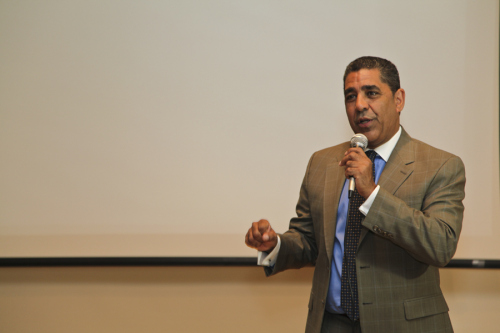By Rep. Adriano Espaillat

In 2016, the city of New York built or preserved 21,963 affordable apartments, making it the best year for advancing affordable housing the city has seen in decades. While our city’s progress on this important issue is significant, it’s only a beginning to solving a problem that went neglected for far too long.
New York City has a housing crisis, and as witnessed in metropolitan communities around the nation with housing market prices that continue to rise, families being pushed from their long-term residences because they can no longer afford to live in the neighborhood, the crisis in housing and particularly for affordable housing has a far greater impact on individuals and families of color.
In another example of just how disconnected President Donald Trump remains from America’s working families and low-income households, the newly released Trump Budget for Fiscal Year 2019, the White House and Department of Housing and Urban Development (HUD) actually requests a reduction of $8.8 billion for HUD Rental Assistance programs. The Trump budget does not include affordable housing nor funding for the Public Housing Capital Fund, and wrongfully implies that affordable housing should be a sole responsibility of state and local governments.
Gentrification is a growing and very real concern in New York City, particularly in neighborhoods like Harlem, East Harlem, and Brooklyn.
Gentrification is rapidly pushing longtime low-income residents out of the area. When market prices rise, especially in historically minority-dense communities, longtime residents of color are typically pushed out as they can no longer afford to rent them homes. It’s easy to recognize the tipping point of when a neighborhood starts to turn. You begin to see an exodus of African Americans in Harlem; an exodus of Puerto Ricans in East Harlem; and, an exodus of Dominicans in Washington Heights and Inwood as noted in a study presented by Dr. Ramona Hernandez of the Dominican Studies Institute of The City University of New York (CUNY).
In her study, Dr. Hernandez examined increasing housing costs throughout Washington Heights and Inwood, and the resulting decline of Dominican Americans in the community. When the people leave, they take their culture and the vibrancy that helped to shape the community with them, thus leaving a void. Gentrified neighborhoods often typically suffer from insufficient construction of low-income housing and inadequate rent regulation laws to control rent prices, which leaves the housing market unstable for residents.
Washington Heights and Inwood have been home to immigrants for over a century, ranging from Irish, Jews, and more recently Dominicans.
Read more: Commit to 5000 Units | Manhattan Times
Related: Cross Broadway and Think Big
We invite you to subscribe to the weekly Uptown Love newsletter, like our Facebook page and follow us on Twitter & Instagram or e-mail us at [email protected].




Maggie Clarke
February 17, 2018 at 12:03 pmI’m glad that our Congressman understands gentrification in Upper Manhattan. I was disappointed though that he did not come out and state clearly to the reader that the Inwood rezoning will cause gentrification. The city claims that 14,000 additional people will be added to Inwood and MIH will ensure that 80% of that number are luxury housing and a very small number will be affordable and available to people living in Inwood so we will have all the social and environmental impact without much benefit to our residents at all. I hope that our Congressman understands the massive impact that adding this number of people will be to all the people living in Inwood. What will this do to our commute? The Inwood post office is already crammed. Our underground infrastructure is fully utilized already and crumbling. We are already in violation of the federal Clean Water Act. We can’t widen our streets and yet thousands of new cars will become resident here. And parking for these cars is already Limited. I would love to hear Congressman as fire talked about all of these issues.
Maggie Clarke
February 17, 2018 at 12:05 pmEdited version
I’m glad that our Congressman understands gentrification in Upper Manhattan. I was disappointed though that he did not come out and state clearly to the reader that the Inwood rezoning will cause gentrification. The city claims that 14,000 additional people will be added to Inwood and MIH will ensure that 80% of that number are luxury housing and a very small number will be affordable and available to people living in Inwood so we will have all the social and environmental impact without much benefit to our residents at all. I hope that our Congressman understands the massive impact that adding this number of people will be to all the people living in Inwood. What will this do to our commute? The Inwood post office is already crammed. Our underground infrastructure is fully utilized already and crumbling. We are already in violation of the federal Clean Water Act. We can’t widen our streets and yet thousands of new cars will become resident here. And parking for these cars is already Limited. I would love to hear Congressman talk about all of these issues here.
REPLY
maimuta
February 25, 2018 at 5:23 pmRon Clark didn’t have your “average” high school class in Inner Harlem to teach. He was teaching the most rowdy and disruptive class in Inner Harlem and he got the job by breaking up a fight the first day he arrived. Ron Clark had only been teaching four years, while living in Aurora North Carolina, when he saw an emission on TV talking about the students struggling at schools in Harlem because of poor teaching.